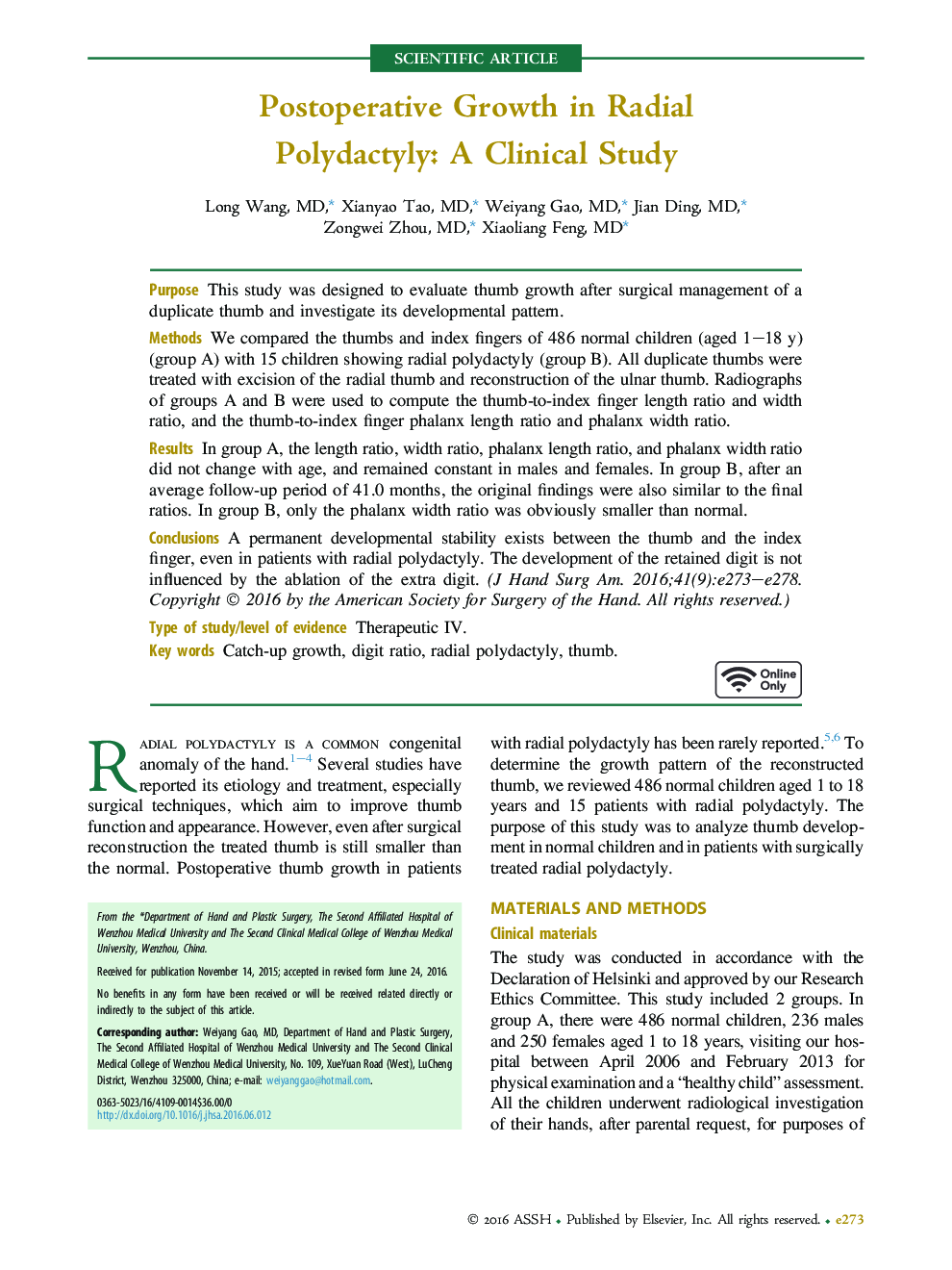| Article ID | Journal | Published Year | Pages | File Type |
|---|---|---|---|---|
| 4065820 | The Journal of Hand Surgery | 2016 | 6 Pages |
PurposeThis study was designed to evaluate thumb growth after surgical management of a duplicate thumb and investigate its developmental pattern.MethodsWe compared the thumbs and index fingers of 486 normal children (aged 1–18 y) (group A) with 15 children showing radial polydactyly (group B). All duplicate thumbs were treated with excision of the radial thumb and reconstruction of the ulnar thumb. Radiographs of groups A and B were used to compute the thumb-to-index finger length ratio and width ratio, and the thumb-to-index finger phalanx length ratio and phalanx width ratio.ResultsIn group A, the length ratio, width ratio, phalanx length ratio, and phalanx width ratio did not change with age, and remained constant in males and females. In group B, after an average follow-up period of 41.0 months, the original findings were also similar to the final ratios. In group B, only the phalanx width ratio was obviously smaller than normal.ConclusionsA permanent developmental stability exists between the thumb and the index finger, even in patients with radial polydactyly. The development of the retained digit is not influenced by the ablation of the extra digit.Type of study/level of evidenceTherapeutic IV.
